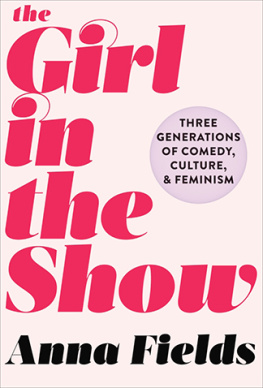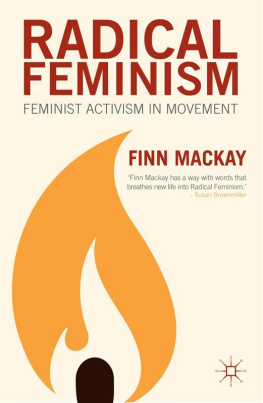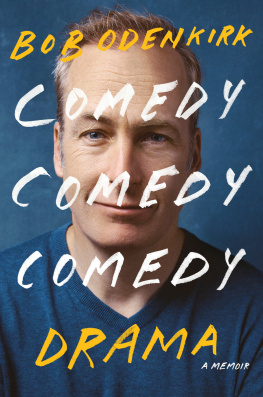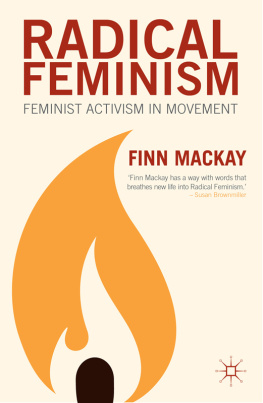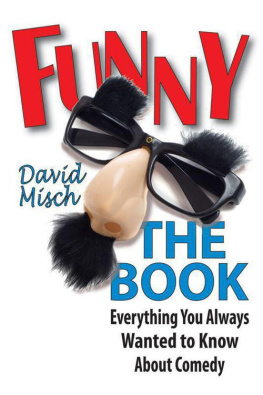Copyright 2017 by Anna Fields
For the Men Who Still Dont Get It by Carol Diehl reprinted with permission.
All rights reserved. No part of this book may be reproduced in any manner without the express written consent of the publisher, except in the case of brief excerpts in critical reviews or articles. All inquiries should be addressed to Arcade Publishing, 307 West 36th Street, 11th Floor, New York, NY 10018.
First Edition
Arcade Publishing books may be purchased in bulk at special discounts for sales promotion, corporate gifts, fund-raising, or educational purposes. Special editions can also be created to specifications. For details, contact the Special Sales Department, Arcade Publishing, 307 West 36th Street, 11th Floor, New York, NY 10018 or .
Arcade Publishing is a registered trademark of Skyhorse Publishing, Inc., a Delaware corporation.
Visit our website at www.arcadepub.com.
10 9 8 7 6 5 4 3 2 1
Library of Congress Cataloging-in-Publication Data is available on file.
Cover design by Brian Peterson
Print ISBN: 978-1-5107-1836-4
Ebook ISBN: 978-1-5107-1837-1
Printed in the United States of America.
I dedicate this to you, my one and only You.
contents
introduction
B EING A FEMALE COMEDIAN IS like bicycling in heavy traffic. You can ride on the same roads as cars, but they werent built for you. You spend way more time avoiding collisions and trying not to get hurt than navigating with ease.
If you doubt this, try a little sidewalk exercise: As youre moving along, minding your own business, try not stepping out of a mans way as he walks toward you. Let me know if he notices youre there. If not, let the inevitable collision happen. And then let me know if he gets confused as to how it happened.
Im reminded of this kind of collision of consciousness whenever I see photos of the Not Ready for Prime Time Players, many of whom later became the first cast of Saturday Night Live . Watching the shows 1975 pilot episode, I first learned of the male Players decision to harness Gilda Radners gender as a publicity technique, hoping to get butts into seats by announcing and theres a girl in the show! Two decades after Elaine May arguably invented the form, live, televised sketch comedy in 1975 was apparently still as much a novelty as having a girl in an improv troupe. Based on this realization, I began to research all the other girls who helped to first make, then change, and eventually control what we now refer to collectively as improv, stand-up, and serialized, nationally broadcast comedies.
I wondered about the power of comedy to shape society. I wondered whether women find the same things humorous today as we did yesterday. I wondered about the pasts influence on the present: Has humor itself changed, or has change only permeated the surface, going no further than the language were using? Some of my interviewees insisted that entertainments largely censored, racially segregated, and highly misogynistic beginnings paved the way for our current actively inclusive, revealing-to-the-point-of-raw comedy landscape; others felt little connection to these women or to liberation itself. I asked them to share their experiences in an industry where theyre expected to simultaneously be both masculine and feminine and to shock the audience with explicitly sexual jokes while avoiding gross topics like tampons, periods, and pregnancy; a profession where bookers continually judge all women based on a single womans performance, and where comics who draw inspiration from their everyday, gendered experiences are often dismissed as blue and relegated to the second-class category of womens comedy. Club owners routinely offer no more than two performance slots in every show for the girls in this category, and because all of the girls are presumed to make the same jokes, unspoken rules dictate that they must always be broken up, buffered by male comics who, due to their genitalia alone, are presumed to have a much wider range of perspectives.
I asked each woman whether, in her opinion, much has changed since Gilda was first introduced as the girl in the show. I hoped that telling her story along with many others would help us reach an answer.
First, however, I had to learn everything I could about Gilda herself. I took a detour through Detroit to pay a visit to her tombstone, which read:
C OMEDIENNE B ALLERINA, 1946 1989
In 1986, Phyllis Diller gave an interview for Fresh Air , wherein she defined what a comedienne-ballerina is, as opposed to a comic or a comedian. According to Phyllis, a comedienne-ballerina was a performer with an investment in creating new worlds, filled with characters. Lucille Ball was an actress because she reacted to comic situations, and Phyllis Diller and Joan Rivers were comics because they spent their careers standing on stage with a microphone, making quips, Phyllis said. Regardless of the distinctions, their collective job was to help their audiences relax and release some of their own personal pain. Its nearly biblical in scope, the catharsis of laughter, and has been known to become a spiritual, detoxifying experience for performers and audiences alike. Heres my heart in my hand, and heres my soul, the performer says. There are moldy, ugly parts, but its still quite beautiful, dont you think?
Today, however, comedienne-ballerina, female comic, and womens comedy are no longer welcome terms. They have gone the way of lady doctor, female reporter, woman writer, and others terms commonly used to refer to all non-male professionals during and immediately after World War II, from roughly 1941 until the mid-1960sa period of radical social change, during which many ambitious women were caught in an awkward catch-22, working outside the home and building nascent careers without the hard-won benefits that working women currently enjoy. This period fed into the commonly understood Second Wave Feminist movement and corresponding sexual revolution, which didnt get into full swing until Betty Friedans The Feminine Mystique seemed to clarify its purposes.
To most modern, educated persons, referring to a physician or a professor (who also happens to be a woman) as lady doctor sounds ridiculous. Yet performers, their audiences, and the general media persistently use terms like female comic and womens comedy to refer to either humorists (who happen to be female) or their craft. It denotes a confining subcategory, segregating women into their own special lane of comedy. This gender-based segregation implies that while comedians who happen to be male fall under the default standard of comedy, women who happen to be comedians are a specialty. A niche. A nonstandard deviation from normal. This ideathat male comedians are normal while female comedians are special exceptionsperpetuates not only discrimination against women in comedy but also gender-based segregation against us all. It promotes the sexist illusion that the lingering question Are Women Funny? is still valid and remains up for debatedespite countless articles, documentaries, and other media that have already provided the obvious answer: Yes. They are. What century are you from again?
Rather than indirectly reopening this debate by using the segregationist terms female comic, female comedian, or even comedienne on their own (the continued existence of which perfectly illustrates our extremely pressing and continued need for a strong, unified Feminism), this book will use the specialized term comedienne-ballerina. In so doing, I hope that we can all finally agree to use Patriarchys own language to disprove its presumption, moving the verb to second place and replacing that annoying question mark with a firm period: Women Are Funny.

